Interviewer: Wuyue, geek web3
Interviewee: Jolestar, founder of Rooch Network & Faust, founder of Geek web3
In response to Bitcoin Magazine’s previously ideological “Three Laws of Bitcoin Layer 2”, Mr. Jolestar of Rooch Network posted on Twitter Express your views on Bitcoin Layer 2.
This situation is just like the previous Nervos public chain Lianchuang Jan, who said on Twitter"Bitcoin Layer 2 should not only consider security issues. Functional expansibility and empowerment of BTC’s currency attributes should also be considered”. These remarks are particularly thought-provoking.
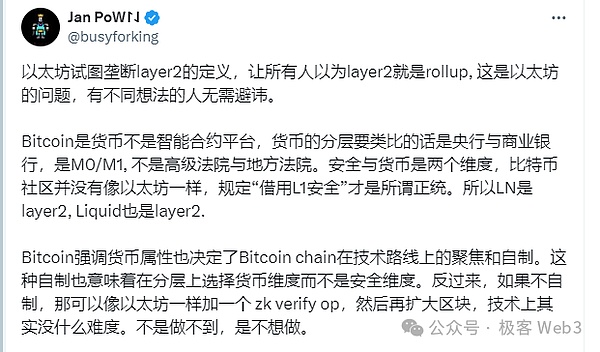
With the attitude of "getting to the bottom" of the relevant theories of Bitcoin Layer 2, Geek web3 specially invited Mr. Jolestar to discuss the definition framework of Bitcoin Layer 2 with Faust from the perspective of different values, aiming to reveal A path to define Bitcoin Layer 2 from multiple angles from the perspective of DA and function expansion. Although there is currently no consensus on how to define Bitcoin Layer 2, the relevant discussion process still has important reference value.
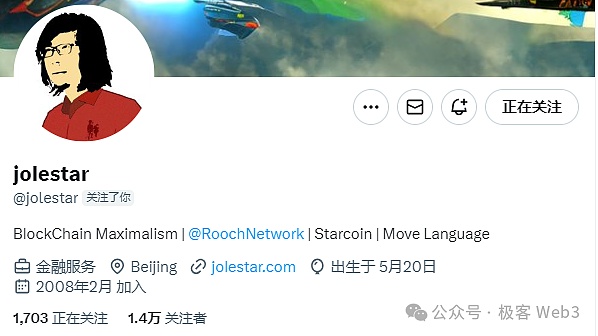
How to define Layer2 from a technical or DA perspective
Wuyue: About how to define Layer2 Question, in fact, there is a similar contention among a hundred schools of thought in the Ethereum community. According to Mr. Jolestar on Twitter,Layer2 can be divided into “definition from a technical or DA perspective” and “definition from a functional expansion perspective”. Then I would like to ask Mr. Jolestar first, what do you think of Layer 2 defined from the perspective of "DA"?
Jolestar:In fact, the key is to make everyone clearly feel the difference between Layer 2 and Layer 1, and the centralized solution. I think there are two core points:
Layer2 does not create new block space. The technical solutions for creating new block spaces are essentially Layer 1.
Layer2 should use Layer1 to implement DA and security.
Wuyue: Teacher Jolestar, please explain here, what is "creating a new block space"?
Jolestar: This is a good question. Theblock space mentioned here refers to the “data storage space” created through the blockchain consensus mechanism. The block space created by the blockchain has many characteristics, such as: completely open, non-tamperable, permanent storage/long-term storage, and contains huge value.
Bitcoin, as the most decentralized blockchain network, has not fully unleashed the value of its block space. This wave of Ordinals inscription craze can be understood as the discovery of the value of Bitcoin as a data availability layer (DA).
The Ordinals protocol defines an extensible data format standard, providing a unified solution for parsing, displaying, and exchanging data engraved on Bitcoin. As for the extended protocol and Layer 2 on Bitcoin, how to fully and effectively utilize Bitcoin’s block space is an important direction of exploration.
Wuyue: Regarding what you said before, "Layer2 should use Layer1 to implement DA and security", I am here I would like to ask,How to use Layer1 to implement DA?
For example, some Ethereum Layer2 (such as Redstone) only sends DA commitment (datahash) to the chain, and the commitment is associated with off-chain data . Although the DA data is not completely released to Layer1, it allows anyone to challenge the Commitment and require the sequencer to put the complete data On Chain. Does this count as creating block space outside Layer1? In other words, if not publishing the complete DA data directly to Layer1, does it count as Layer2?
Jolestar: The meaning of "realizing DA" I talked about here is actually very tolerant, and it does not mean DA The release of data must completely rely on Layer1. Even if the DA data is not completely on chain, as long as the asset security of Layer2 can be associated with Layer1, it will be fine.
Different Layer2 solutions have different application scenarios and will have different DA implementation paths, such as Wuyue mentioned above The DA implementation method is worth exploring. For another example, CEX has taken a step closer in this direction by submitting the reserve certificate to the chain. Therefore, the "implementation of DA using Layer 1" I mentioned here is broader than the method mentioned by the Ethereum Foundation.
Faust:In fact, putting DA data completely on chain is to allow anyone or node to trust it To obtain new data, further speaking, it is for the sake of asset security. If DA data is not completely on chain, it may not be unsafe. For example, in the RGB protocol, only the data Commitment is released to the Bitcoin chain, and the associated transaction data is stored off-chain. This solution can still Ensure asset security because users will personally verify their own transactions. If the verification fails, such transactions will not be allowed to take effect. Apparently this is very safe.
So in the scenario of RGB protocol, even if the DA data is not released to the Bitcoin chain, the user’s assets are still safe. If the user loses the data, it is not considered In this scenario, I think this method of personal verification by the client is more reliable than directly entrusting assets to any public chain. Even if the assets are directly hosted on the Ethereum network or the Bitcoin main network, it is not as safe as running the client verification yourself, because both Ethereum and Bitcoin are third-party platforms.
So, Whether DA is On Chain/On Layer1 is not a necessary condition for Layer2, but there should be a corresponding mechanism design to ensure the release of DA data. It is reliable, at least it should not "seriously threaten" the security of user assets.
Looking at Layer2 from the perspective of ecology and functional expansion
< /p>
Jolestar:When defining L2 from the perspective of ecology and functional expansion, we focus on how L2 utilizes or inherits what L1 provides ability. Take Bitcoin as an example. All Layer 2 are talking about how to empower the asset attributes of BTC and how to use trillions of BTC assets to generate additional usage scenarios, whether it is trading or staking. Big room for imagination.
To allow the assets of one blockchain system to be traded in another system, a bridge is needed, and the key issue here is how to make users trust this bridge. , and ensure the safety of assets. From this perspective, all solutions that create usage scenarios for BTC assets through bridges can be understood as broad Bitcoin L2. Even BTC ETF can be understood as the L2 of Bitcoin. It is a completely centralized custody bridge that ensures security through legal supervision.
So what everyone is struggling with is not the issue of decentralization, but the issue of trust. Decentralized solutions can reduce users’ trust costs and bring opportunities to new projects, but how to construct a secure trustless bridge on Bitcoin is a key problem. Can L2 use other features of Bitcoin to Improve the safety of this bridge. In addition, with the development of extension protocols on Bitcoin, whether it is Ordinals, extension protocols on top of Ordinals (BRC20, etc.), Atomics, RGB, Taprootassets, etc., there will be more and more new assets on Bitcoin. How to make this bridge Being scalable and able to quickly support new asset types is a huge challenge.
Faust: Teacher Jolestar may be more optimistic about the broad Layer 2 definition scheme. But according to my personal opinion,Layer2 and even modular blockchain have become popular in the Ethereum community. Westerners are more focused on the Ethereum-style Layer2 definition standard. When judging today’s Bitcoin ecosystem, this can be seen in many Western KOLs.
For example, CEO of Oridnals trading platform Bioniq @BobBodily once pointed out that the Bitcoin ecosystem An organization like L2BEAT is needed to judge Layer 2; Citrea's Lianchuang directly quoted some technical terms invented by L2BEAT, such as Optimium, etc., to summarize some special Bitcoin Layer 2 solutions. The CEO of Bitcoin Magazine even threatened to directly hire people from L2BEAT to review Bitcoin Layer 2. [Note: Optimium refers to OP Rollup that does not publish complete DA data on Layer1]

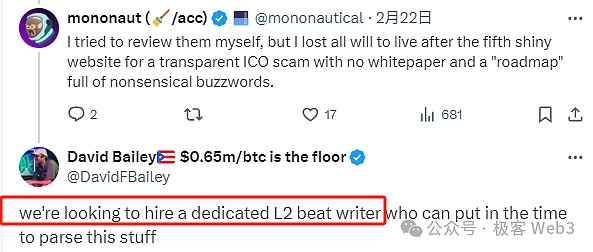
If you look at many "Bitcoin Layer 2" from the perspective of Ethereum/Celestia, you will find that one important point in the current BTC ecosystem is that many project parties are not very accurate. To find your own position, Self Position often has problems. For example, do you think something like Celestia is Ethereum Layer 2? Of course not, but it is an important DA layer module in the Layer 2 ecological landscape and the most influential one.
Similarly, many projects are not Layer 2 itself, but the infrastructure or modules that Layer 2 relies on. In essence, it is the kind of functional expansion that Jolestar said. layer. This is like the relationship between B^2 Network and B^Hub network. The former is a typical Layer 2 solution, while the latter is the facility that the Layer 2 solution relies on.
The positioning of many projects in the Bitcoin ecosystem is a bit confusing now. In order to reduce communication costs and make it easier for everyone to understand, they directly position themselves as Layer 2. But in fact, there are many projects similar to Celestia and Avail, core modules in the Layer2 component stack, rather than complete Layer2 itself.
People in the Western community, especially those in the modular blockchain-related community, must know exactly how to classify them. I believe that Western OGs will completely distinguish "Which is Layer 2 itself and which is the function expansion layer that Layer 2 relies on". By then, everyone will be able to see the entire Layer 2 ecosystem more clearly. As for being as messed up as it is now.
Jolestar:I have some different opinions from Faust here. If we put aside the specific implementation methods and understand Layer 2 and other off-chain expansion solutions abstractly, we will find that it is a continuous spectrum, From CEX at the far left to Layer 1 at the right end, and in the middle Solutions can be found within this spectrum.
The two ends of this spectrum also represent two different growth models. CEX is basically a completely product- and user-oriented growth method, while L1 has a longer construction cycle and prioritizes narrative and blueprints, while L2 is in the middle and will be a mixed growth model.
By adopting an inclusive perspective, we don’t need to get too hung up on what “real Layer 2” is. Various technologies and solutions created by the industry, Validium, Plasma, sovereign rollup, OP/ZkRollup, modular execution layer, decentralized computing, side chains, L2/L3, etc., should all be regarded as this spectrum As part of the industry, the industry is exploring the infrastructure required for new applications through various permutations and combinations.
Different projects have different assumptions about new applications, which also determines its combination and growth model. It may be that Layer 1 is a little to the left, or CEX is a little to the left. A little to the right. The future is uncertain. It is difficult to tell which model will grow at this stage, but one thing is certain. After so many years of exploration, the industry has a large-scale Layer 1 and a large-scale CEX. It also needs to have a large-scale CEX. The middle layer fills this gap.
How can the Bitcoin network be expanded?
< strong>Jolestar: Regarding this topic, I would like to briefly talk about the programmability of Bitcoin scripts.
BitcoinScript has limited programming capabilities. Its asset programming capabilities are mainly represented by three types of locks: time lock, Hash lock, and private key lock. Taproot allows the complexity of BitcoinScript to increase by an order of magnitude, which creates possibilities for solutions such as bitvm. But the more critical issue is that Bitcoin Script is stateless. As a programming language executed on the chain, it cannot read the status of Bitcoin, such as timestamps, nonces of past blocks, and parasitic asset information attached to UTXOs. wait.
Bitcoin script can only rely on the information attached to the transaction input. Whether we can use Bitcoin script to arbitrate off-chain malicious behavior is still a question Directions to be explored.
Another perspective is innovation in cryptography, including protocols that construct game mechanisms based on key exchange to ensure security, such as the Lightning Network. "Extractable one-time signature" etc.
HereI want to talk about a concept called StackableL2 (Stackable L2). If we implement the Indexer of Bitcoin's extension protocol through smart contracts, parse all UTXOs on Bitcoin and additional states in Indexer, and allow developers to deploy applications to Indexer through smart contracts, it is equivalent to providing a new method for Bitcoin. Smart contract layer, this is our Rooch Network solution.
I called this mode smart Indexer before, but the concept of Indexer feels like it is read-only, so I used a new word "Stackable L2" , refers to all extension schemes that contain the full state of L1 in L2, which completely inherits all states of L1. In this case, the L2 application can read all the states on L1 and create new states at the same time. The assets of L1 and L2 can be stacked and combined to form new assets. The security of L2 can be ensured through modular solutions.
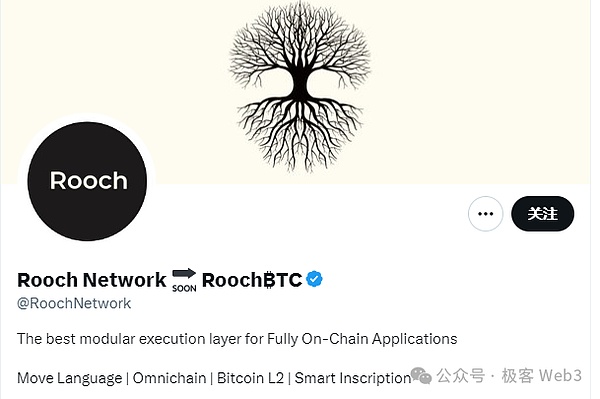
Wuyue:Can you give an example of how L1 and L2 assets can be stacked and combined to form new assets?
Jolestar: For example, there is an inscription on Bitcoin to express a piece of land. L2 can then stack a house on top, and together they form an asset whose value is higher than the original land. Then someone builds this house into an exhibition hall, and then the value is different. In fact, this model is similar to the asset appreciation model in the real world. Assets in the real world also achieve value-added through synthesis, combination, and stacking.
Wuyue: The concept of stacked L2 is a bit interesting. How did this idea come about< /strong>Are there any other similar projects doing this kind of thing now?
Jolestar:We think about how to inherit the existing state on Bitcoin, whether it is UTXO or inscription. I started thinking about using a Merkle proof method. The Layer 2 node only saves the Bitcoin block header and does not save the "full status" of the Bitcoin network. However, when it was implemented, it was discovered that this solution had poor user and developer experience and could not well support new assets such as inscriptions. So it later evolved into the form of saving "full status".
We have seen projects with similar ideas on the market. The Ethereum community has a solution called Booster Rollup. There is a solution called strong>Taiko’s project saves the full status of Layer1 in Layer2The smart contract in L2 can directly read all the status of L1. Of course, we still have differences in the specific implementation. For example, it is an EVM virtual machine, Rooch is a Move smart contract, and the DA and security mechanisms are also different.
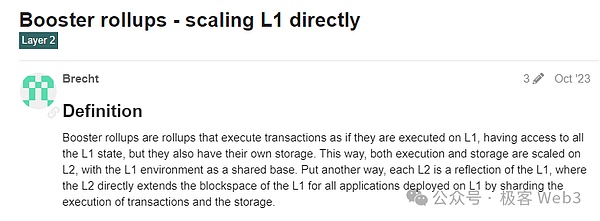
Fog Moon: In the above scenario, do Rooch's Move language have any advantages?
Jolestar: The assets in Move are expressed as resources or Objects, and Bitcoin’s UTXO and inscription (Inscription), All can be directly mapped to Objectin Move. They belong to the Object of the user Owner. A key reason for the limited programming capabilities on Bitcoin is that it is difficult to express shared state, and Move has the concept of Shared Object, which can provide a good programming experience when combined with Layer 2.
The RGB++ protocol and isomorphic mapping proposed by the CKB team are the pioneers of this type of thinking, but their Cell is smaller than Move Object in the language is a more thorough and pure UTXO, but the core concepts are actually similar.
Another advantage of Move is its combining ability, which allows one asset to be nested within another asset. For example, in the previous example, the house must be nested in the plot, otherwise it will be difficult to realize the atomic transfer of the plot and the house.
Faust: Here Jolestar mentioned RGB++. Indeed, RGB++ is a typical solution to expand Bitcoin UTXO from a functional perspective. RGB++ is not only applicable to CKB itself, but also to public chains such as Cardano, Fuel or Sui that are related to UTXO or similar state storage models.
From this perspective, CKB, Cardano, Sui, and Rooch can all be used as the function expansion layer of Bitcoin, This is understandable. Now the Western community is too obsessed with "security" and ignores the expansion of Bitcoin UTXO functions, which is something we should pay attention to.
Wuyue: What is the current state of Rooch Network? What are the technical challenges of the above solution?
Jolestar: We are preparing for the launch of the RoochBTC pioneer network, as well as post-launch operational activities. The RoochBTC advance network will contain all UTXO status and inscriptions on Bitcoin, and is currently undergoing final data verification and improvements to the upgrade mechanism.
The total amount of data on Bitcoin is about a few hundred gigabytes. If the UTXO and inscriptions are fully parsed and expressed in Move language, the amount of data will increase several times. There are many various inscription protocols now, and the standardized implementation of inscription protocols is incomplete. It is difficult to support them all at once. We need to provide a mechanism to dynamically support new inscription protocols, and then gradually increase support for new protocols based on feedback from the community.
The test network is now online. We welcome developers and users who are interested in Bitcoin and Move to experience it and try to develop applications .
 JinseFinance
JinseFinance












